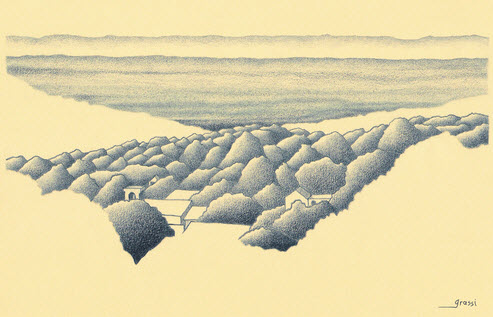 |
| The Local Time is Saturday, 27-Jul-2024 13:03:49 CEST |
Snowshill Tourist Information and Travel Guide Cotswolds |
|
|||
| YOU ARE HERE: Main Home Page > Places to Visit > Snowshill |
|
|
|
|
|
||||||||||||||||||||||||||||||||||||||||||||||||||||||||
|
Snowshill village sits on the top of the escarpment above the villages of Broadway, Buckland, and Laverton. It is a secluded village where ancient pretty cottages and a 19th century church cluster around a small green. As its name implies - if there is any snow about then you will find it here first. Snowshill is renowned for its manor house, now administered by the National Trust. It is interesting architecturally as a typical 15th to 16th Century manor house, with a good dovecote. The beautiful gardens are terraced and were designed by Charles Wade. On the site is a teashop and restaurant. Here in Snowshill you will find ancient charm and peaceful ambling with refreshments to be had at the Snowshill Arms pub.
|
||||||||||||||||||||||||||||||||||||||||||||||||||||||||
Wade was born in 1883, the son of a sugar plantation owner. He was to inherit the plantations on St Kitts in 1911, which enabled him later to buy Snowshill Manor. Wade was and remains an enigmatic character. Several notable figures of the twentieth century met him and stayed at the Manor - John Betjeman, Graham Greene, Virginia Woolf, John Buchan and J B Priestley among them - and give differing impressions of their meetings. There is little doubt that Wade cultivated this elusive persona; he dressed very theatrically, almost ghoulishly, and the collection is itself like a performance, a theatre of objects. The writer J B Priestley described Wade as - Snowshill Manor was owned by Winchcombe Abbey as early as 821, until the Dissolution of the Monasteries in 1539. It was at one point part of Katherine Parr's marriage dowry, although she probably never visited. The house passed through many different hands and the way it has been added on to at different points in its history reflects this. The northern end of the house is the oldest surviving part, dating from around 1500, still medieval in its design. It was extended and reshaped in around 1600 but it was the additions by the Sambach family in the early part of the eighteenth century that from one viewpoint radically altered the aspect of the manor from an Elizabethan to a Georgian house. Written by Charles Padget Wade of Snowshill Manor:- 'Old am I, so very old, The garden at Snowshill Manor was designed by M.H. Baillie Scott - a leading figure in the Arts and Crafts Movement. Read more about - Charles Padget Wade. |
||||||||||||||||||||||||||||||||||||||||||||||||||||||||
Local AttractionsSnowshill Manor, its gardens and exhibits. The Winter scenes of the film 'Bridgette Jones's Diaries' were filmed here. The Snowshill Arms Pub |
||||||||||||||||||||||||||||||||||||||||||||||||||||||||
NearbyDRIVING DISTANCES - Broadway 5 minutes, Chipping Campden 20 minutes, Winchcombe 20 minutes, Stow 15 minutes, Moreton in Marsh 15 minutes. |
||||||||||||||||||||||||||||||||||||||||||||||||||||||||
 Ink Sketch of the hillside village of Snowshill by Richard Grassi |
||||||||||||||||||||||||||||||||||||||||||||||||||||||||
|
||||||||||||||||||||||||||||||||||||||||||||||||||||||||
Cotswold Village of Snowshill |
||||||||||||||||||||||||||||||||||||||||||||||||||||||||
| This page last modified Thursday, 11-Feb-2021 13:24:10 CET | ||||||||||||||||||||||||||||||||||||||||||||||||||||||||



 Snowshill Manor is a fascinating tudor mansion. The house was purchased in 1919 by
Snowshill Manor is a fascinating tudor mansion. The house was purchased in 1919 by 